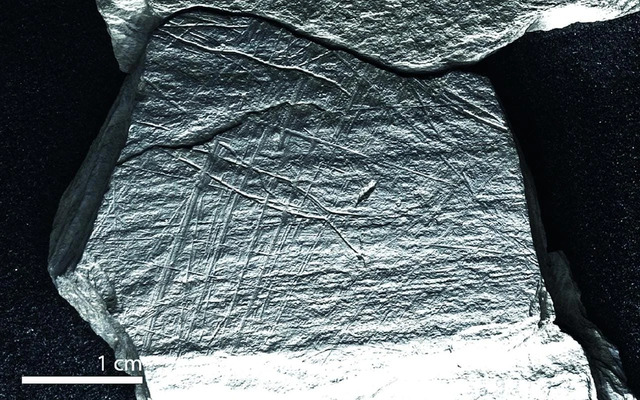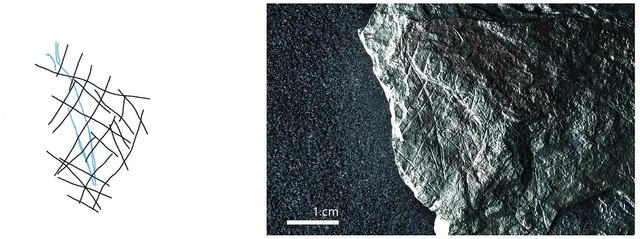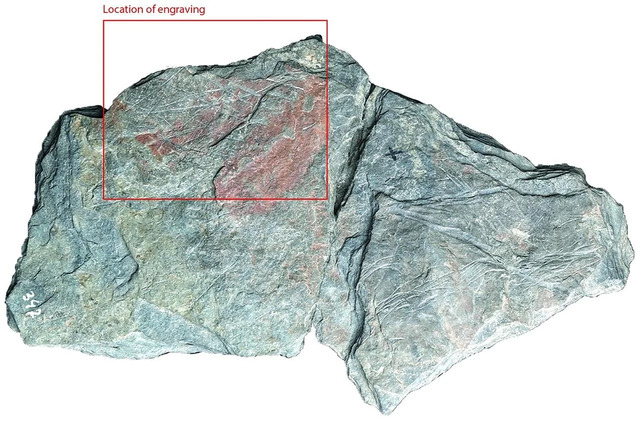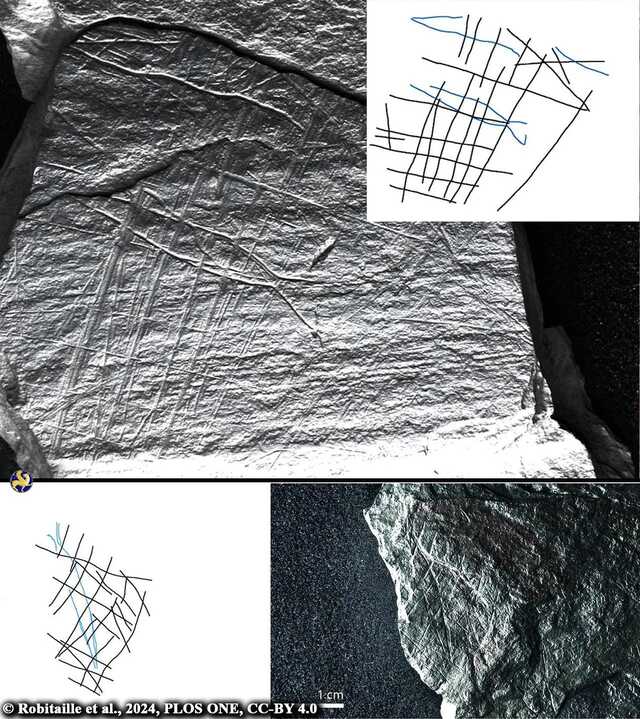In the heart of Europe, along the banks of the Rhine River in Germany, archaeologists have uncovered a groundbreaking glimpse into prehistoric ingenuity. At the Gönnersdorf archaeological site, 15,800-year-old engravings on stone slabs provide the earliest known depictions of fishing nets, revealing advanced fishing practices by Ice Age communities. This discovery sheds new light on how Magdalenian hunter-gatherers harnessed natural resources with remarkable technological and artistic sophistication.
The Gönnersdorf Archaeological Site
Gönnersdorf is a well-documented archaeological treasure, renowned for its rich array of prehistoric art. For decades, researchers have studied the site’s 406 engraved schist slabs, or plaquettes, which depict an Ice Age world teeming with life. These engravings include vivid representations of reindeer, wild horses, woolly rhinos, and mammoths—animals that sustained the hunter-gatherers of the time. Among the highlights are the stylized female figures that reflect symbolic cultural practices. However, until recently, these depictions had not included imagery related to fishing.
The latest findings add an entirely new dimension to our understanding of the Magdalenian people who lived at Gönnersdorf around 17,000 to 12,000 years ago. With the aid of modern imaging techniques, researchers uncovered engravings of fish intertwined with grid-like patterns, suggesting the earliest evidence of fishing nets or traps.
Discovery of Fish and Nets
The key breakthrough came from the application of Reflectance Transformation Imaging (RTI), a technology that enhances fine surface details. This method enabled researchers to uncover faint engravings previously overlooked. On eight of the schist slabs, they identified fish surrounded by grid patterns of crisscrossing lines. These grids, overlaying the fish motifs, are interpreted as depictions of nets or traps.
Dr. Monica Spicker, lead author of the study, described the significance of the find: “The central location of the fish, within grid lines which clearly overlay them and exceed them in size, strongly suggests that the grids represent a form of container—a net or trap—into which the fish have become enmeshed.” This deliberate layering implies a conscious artistic effort to depict not just the fish, but the method of their capture.


Implications for Ice Age Technology
The engravings suggest that Magdalenian communities were skilled in creating fishing nets from natural fibers like milkweed or nettle. These nets would have been crucial for capturing fish during seasonal migrations, providing a reliable food source. The presence of fish remains at Gönnersdorf corroborates this interpretation, highlighting fish as an important dietary component.
Moreover, these findings hint at an advanced understanding of textile technology. Other artifacts from the site, such as carved figurines of clothed individuals, suggest that weaving skills were already well-developed. The use of nets for fishing demonstrates how these skills were applied in innovative ways to enhance food acquisition.
Dr. Spicker remarked, “These engravings not only show the ingenuity of early humans but also their ability to adapt and innovate in response to their environment.”
Cultural and Symbolic Insights
The engravings also provide a fascinating window into the symbolic world of the Magdalenian people. Unlike the naturalistic style used to depict animals like reindeer and mammoths, the fish and nets are rendered in a more abstract, geometric manner. This stylistic difference suggests that fishing held a unique cultural or symbolic significance within the community.
Fishing may have been more than a practical activity; it could have played a role in social rituals or seasonal gatherings. The abstract representation of fish within nets implies that these images were not mere illustrations but perhaps carried deeper meanings related to communal identity or survival strategies.

Broader Impact on Prehistoric Studies
The discovery of fishing scenes at Gönnersdorf has profound implications for our understanding of prehistoric life. It expands the timeline of net-based fishing technology, previously thought to have emerged much later in human history. This finding places Magdalenian communities at the forefront of technological innovation during the Ice Age.
In a global context, the engravings contribute to a growing body of evidence that early humans around the world were developing diverse and complex fishing techniques. Similar examples of ancient fishing technology have been found in regions as far afield as Africa and Asia, underscoring the universal importance of aquatic resources to early human societies.
The findings at Gönnersdorf also open new avenues for research. Future excavations may uncover additional artifacts that deepen our understanding of how Magdalenian communities lived, worked, and expressed themselves artistically.
Conclusion
The 15,800-year-old engravings at Gönnersdorf represent a remarkable blend of artistry, technology, and cultural expression. By depicting fish within nets, these ancient images reveal the ingenuity of Ice Age communities and their ability to thrive in challenging environments. As archaeologists continue to study these artifacts, they offer an invaluable glimpse into the creativity and resourcefulness of our prehistoric ancestors, leaving an enduring legacy etched in stone.
